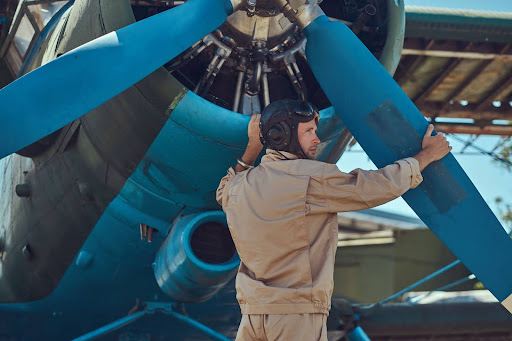Our Clients
Key Challenges in Oil and Gas Operations
The oil and gas industry faces unprecedented operational challenges that demand innovative training solutions. With over 70% of the workforce expected to retire within the next decade, companies struggle with massive knowledge transfer gaps and skills shortages in critical areas like drilling, refining, and safety protocols. Traditional classroom-based training methods prove inadequate for complex offshore operations, where a single mistake can result in catastrophic environmental disasters and billions in losses.
Safety remains the industry’s most pressing concern, with oil and gas operations recording fatality rates 2.5 times higher than those of other industries. Workers face constant exposure to hazardous materials, high-pressure systems, and explosive environments where hands-on training with real equipment poses unacceptable risks. Geographic isolation of drilling sites and refineries creates additional challenges, making it difficult to provide consistent, standardized training across global operations.

Our Tailored Immersive Solutions in Oil & Gas
Immersive Safety Training
Utilizing immersive headsets, we simulate hazardous scenarios like gas leaks and blowouts, enhancing safety awareness and protocol adherence. This approach exemplifies experiential learning solutions in oil and gas industry, enabling risk-free, lifelike emergency preparedness.
Advanced Equipment Simulations
Integrating CAD models with physics-based high-fidelity spatial visualization systems, operators practice maintenance and troubleshooting. This method supports oil and gas immersive workforce training, minimizing equipment downtime and building confidence in handling complex systems.
Digital Twin Collaboration
Leveraging digital twin technology, we create interactive 3D replicas of facilities, facilitating remote team collaboration for inspections and planning. This integration of next-gen simulation framework enhances operational efficiency in oil and gas operations.
Predictive Maintenance Training
Our XR-powered procedural simulation engine solutions employ machine learning to simulate potential equipment failures. Through spatial simulation training, workers learn to identify early warning signs, perform proactive repairs, and extend equipment lifespans.
Virtual Field Inspections & Repairs
AR/VR-enabled field inspections overlay real-time instructions during on-site work, ensuring accurate repairs and reduced inspection times. This technology improves efficiency in remote environments, enhancing training and inspections in the oil industry.
Interactive Facility Walkthroughs
Using photogrammetry and LiDAR scans, we design detailed 3D virtual tours of oil rigs. Our advanced VR training solutions for oil and gas enable safe, immersive onboarding to explore layouts and safety exits risk-free.
Benefits of Experiential Learning in the Oil & Gas Industry
Improved Safety & Risk Reduction
With a fatality rate significantly above average, the industry benefits from cognitive immersion learning platforms in oil and gas, where immersive simulations reduce workplace accidents, enhance hazard recognition, and allow safe practice of emergency responses in controlled, high-risk virtual environments.
Cost & Time Savings
Oil and gas immersive workforce training accelerates onboarding and reduces unplanned downtime by building critical skills before workers enter the field. This proactive approach minimizes operational disruptions while cutting training time by up to 80%, boosting both efficiency and ROI.
Increased Retention & Engagement
Experiential learning via spatial simulation training for oil and gas activates multiple senses, significantly improving retention and confidence. Real-time feedback, task repetition, and problem-solving in lifelike scenarios foster deeper understanding, sustained engagement, and continuous upskilling across high-stakes industrial environments.
Improved Problem-Solving Skills
Simulated emergency scenarios help employees sharpen their judgment, troubleshoot under pressure, and master rare events. Tailored immersive solutions for oil and gas strengthen decision-making through repetition, scenario diversity, and feedback, empowering better responses, reduced downtime, and confident performance in unpredictable field conditions.
Frequently Asked Questions
Immersive training platforms are integrated with oil and gas simulation software by importing 3D models and equipment data from industry-standard simulation tools (like Schlumberger Petrel, Aspen HYSYS, or CMG simulators) into experiential learning environments. Middleware APIs and real-time data feeds allow these platforms to visualize simulation data in immersive training systems, enabling dynamic and interactive digital twin experiences. Many spatial simulation training platforms also integrate with CAD software, SCADA, and Product Lifecycle Management and Learning Management Systems for seamless workflow connectivity.
Remote oilfield immersive training deployments require rugged, portable equipment. Recommended hardware includes standalone wireless VR headsets (such as Meta Quest or Pico), ruggedized laptops or workstations equipped with strong GPUs (like NVIDIA RTX series), reliable power supplies (battery packs or generators with surge protection), and the capability for offline operation with later cloud synchronization. Transport cases must be weatherproof and shock-resistant to handle harsh field conditions. For more demanding applications, high-end tethered VR headsets may be paired with portable, durable PCs.
To ensure data security and regulatory compliance:
- End-to-End Encryption: All data transmission between VR devices and backend servers is encrypted (AES-256 or TLS 1.2+).
- Access Control & Authentication: Role-based access, MFA, and integration with enterprise identity providers (e.g., Azure AD).
- Offline Data Handling: Sensitive data can be stored locally with encryption, minimizing cloud exposure.
- Compliance Standards: VR vendors often align with industry standards like ISO/IEC 27001, NIST, and regional data protection laws (e.g., GDPR, HIPAA if applicable).
- Audit Logs: Detailed logs of user activity, data access, and session history to support internal audits and external compliance.
Most commercial VR headsets are not intrinsically safe for classified hazardous zones (e.g., ATEX Zone 1 or Zone 2 environments). Key considerations:
- No Direct Use in Hazardous Zones: Standard VR headsets are electronic devices that may cause sparks and are unsuitable for explosive atmospheres.
- Safe Zone Training: VR training is typically conducted in safe areas (e.g., control rooms, training centers, or mobile labs).
- Alternative Solutions: For field training, augmented reality (AR) solutions on intrinsically safe tablets (e.g., ecom or Pepperl+Fuchs devices) are preferred.
If deployment in hazardous zones is essential, custom hardware certified for explosive environments would be required, but this is rare and costly.
Development timelines typically range from 1-3 months for standard interactive learning modules and 3-6 months for complex immersive simulations with 3D environments and system integrations. The timeline depends on content complexity, interactive elements, and integration requirements with existing oil and gas systems. Detailed planning and experienced vendors help ensure realistic timelines that align with your training objectives.
Our Offices

India
Bangalore
GR Grand Plaza, 2nd Floor, JP Nagar, 6th Phase, Bangalore – 560 078

KSA
Jeddah
St Idris Square, 4036 Helmi Koutbi, Al Zahra, Jeddah 23425, Saudi Arabia
Follow Us On:
© 2025 Juego neXR. All Rights Reserved.















